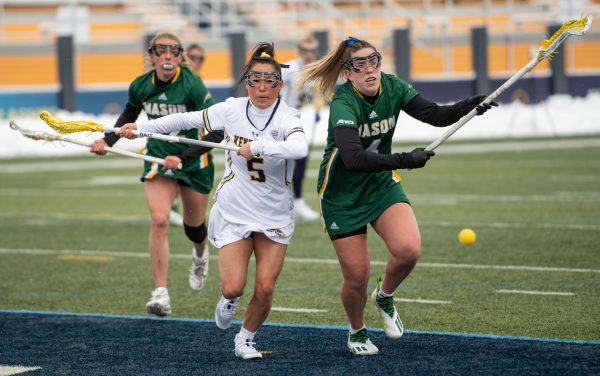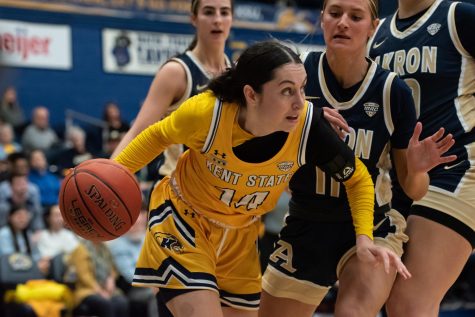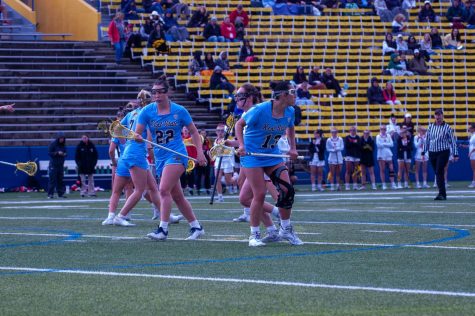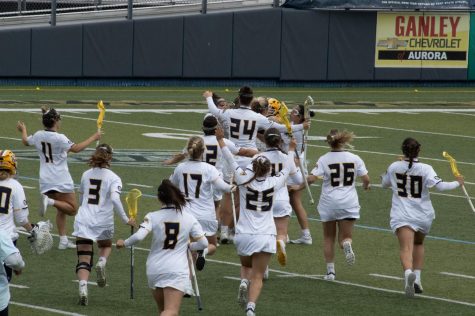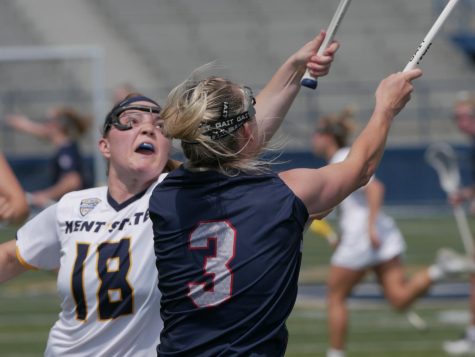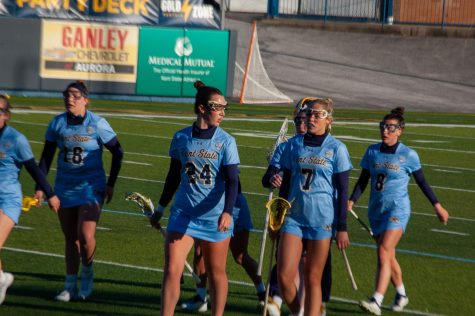University club sports competitive, receive little support from university
March 9, 2006
Looking through goggles that are required for women’s intercollegiate lacrosse, Jamie Hassey, sophomore crafts major, listens as assistant coach and manager Ashleigh Ress, junior graphic design major, goes over a drill last fall. GAVIN JACKSON | DAILY KEN
Credit: Carl Schierhorn
For some of Kent State’s nearly 20 competitive club sports teams, the season is starting. For others, the season is coming to a close. But for all teams, the fundraising season lasts the whole year.
Every year, the teams have to raise money to pay for league dues, travel expenses and equipment. But they also get help – limited allocations are available through recreational services.
Greg Bailey, recreation program coordinator, said he and the Allocations Committee had a $25,000 budget to distribute to the 13 teams who applied for allocations. He said $18,000 was given to the teams at the beginning of the school year, and the rest was used for other various expenses that came up.
“Unfortunately, we don’t have an unlimited budget,” he said.
The amount given to each club that asks varies depending on a number of factors determined by the previous year. These factors include participation rates, budgets, image, travel and number of fines against the team.
“It’s not an entitlement program,” Bailey said. “It’s a discretionary program. Obviously, there’s not going to be any favoritism.”
On average, clubs this year received $1384.61 each, Bailey said. But all clubs aren’t equal. The hockey club received the most with more than $7,000, while the ultimate Frisbee team was given $500.
“In defense of ice hockey – they’re the one club that has to pay $90 an hour for ice time,” Bailey said. The hockey club’s actual expenses can add up to $150,000. The team does a lot of fundraising through the year, and members pay to play.
Also, hockey benefits other clubs.
“Ice hockey is the only club that gives back to other clubs,” Bailey said.
Other club teams are able to work at home games and earn about $75 a game.
Club struggles
The men’s rugby team received $708 at the beginning of the school year, said club President Sam Chappell, junior criminal justice major.
To join its various leagues, it costs the team $450 up front. For each home game, referees cost $50. When travel and equipment are added in, that $708 doesn’t stretch very far.
“It would be a lot nicer to get more money from the school,” Chappell said.
The team doesn’t charge its members anything to join but expects members to join in on fundraisers.
Club baseball gets only enough money to cover league dues and early practices. All other expenses are covered through club dues and fundraisers.
“It’s just all self-sufficient,” said Jason Fischer, the team’s student manager.
But some clubs don’t even request funds from the Allocations Committee. The women’s lacrosse team, which started its season at home in February, was able to raise enough money on its own, team President Jackie Willer said.
“It was a lot of paperwork,” she said, “and it wasn’t really worth it.”
The team does, however, take advantage of working at hockey games.
Why club sports?
Club sports fit somewhere between intramural and varsity sports. And the students who play clubs sports come from all around, too.
“They want to participate in the activity but may not have the time for a varsity program,” Bailey said.
But because they’re not competing at the varsity level, it doesn’t mean the games are any less intense.
“It’s not as demanding as varsity,” Fischer said. “But it’s just as competitive.”
Fischer used to play varsity baseball at Marietta College until he was injured. He moved back home to attend Kent State and join the club baseball team.
“My only other option if I wanted to play baseball was this,” he said.
And with club sports, that’s a quality that every player has – the desire to play.
No scholarships are offered at the club level, no big NCAA stipends and no lush team buses to travel in.
Just pride and passion for the game.
Contact ALL editor Seth Roy at [email protected].












